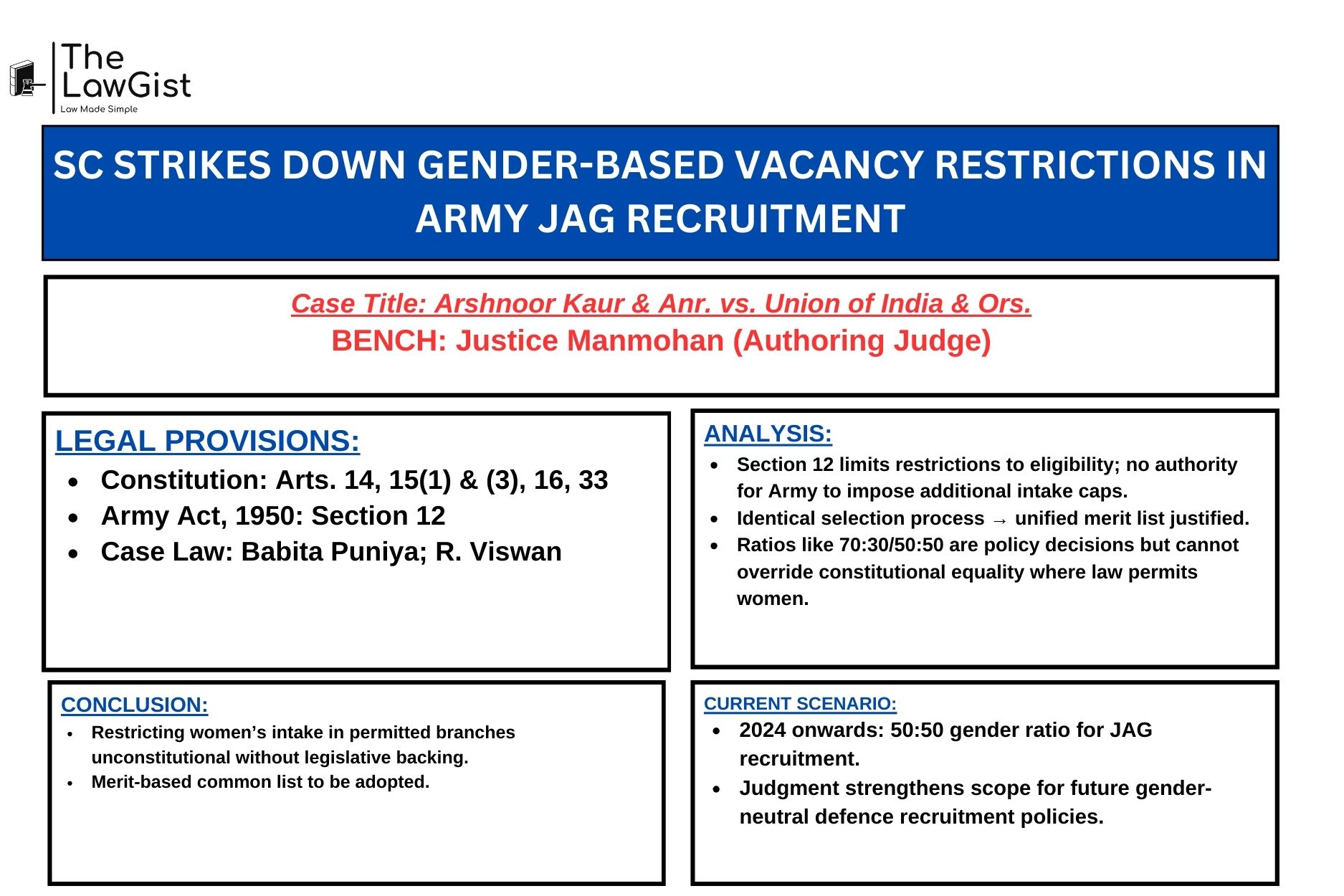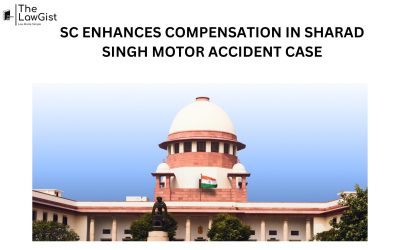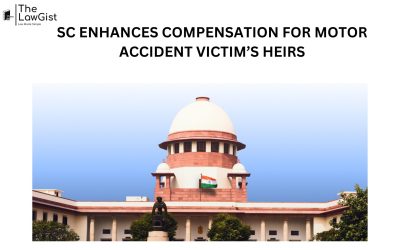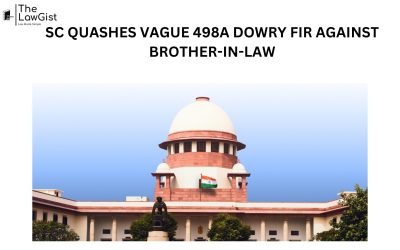
Supreme Court delivers landmark ruling on gender-neutral recruitment in Indian Army’s JAG branch.
SC STRIKES DOWN GENDER-BASED VACANCY RESTRICTIONS IN ARMY JAG RECRUITMENT
CASE SUMMARY – The Supreme Court in Arshnoor Kaur & Anr. vs. Union of India & Ors. examined the legality of restricting women’s vacancies in the JAG branch despite identical selection standards for both genders. Petitioners, higher scoring than male selectees, were denied due to a policy allocating 6 male and 3 female seats. The Court held that once women are permitted under Section 12 of the Army Act, 1950, further intake limits require explicit statutory authority. Administrative ratios like 70:30 or 50:50 cannot override constitutional equality. The Court directed a unified merit list and ordered Petitioner No.1’s induction, bolstering gender equality in military recruitment.
| ASPECTS | DETAILS |
| Case Title | Arshnoor Kaur & Anr. vs. Union of India & Ors., Writ Petition (C) No. 772 of 2023 |
| Introduction | The case challenges the recruitment policy for the Judge Advocate General (JAG) branch of the Indian Army, which allocated separate male and female merit lists with unequal vacancies despite identical selection processes, arguing it violates Articles 14, 15, and 16 of the Constitution. |
| Factual Background | Petitioners ranked 4th and 5th in the women’s merit list but were denied admission despite higher marks than several male candidates, due to a policy reserving 6 male and only 3 female vacancies in JAG SSC Course (31st). They sought a unified merit list and gender-neutral recruitment. |
| Legal Issues |
|
| Applicable Law |
|
| Analysis | Court held that once women are permitted in a branch under Section 12, the Army cannot impose further limits on their intake unless expressly provided by law. Separate merit lists were unjustified as testing standards were identical. The 70:30 and 50:50 ratios were administrative choices without statutory basis. |
| Conclusion | The impugned policy was unconstitutional to the extent it restricted women’s induction beyond what Section 12 allowed. A unified merit list should be prepared when selection parameters are identical. Petitioner No.1 to be inducted in the next available course. |
| Current Scenario | Policy from 2024 onwards prescribes a 50:50 male-female intake in JAG. The judgment reinforces gender equality in military recruitment where statutory notification permits women, and limits executive discretion to impose further numerical restrictions. |
“Once permitted under law, women’s induction in the Army cannot be curtailed by administrative ratios lacking statutory backing.”
SOURCE – SUPREME COURT OF INDIA
READ ALSO – Articles 14, 15(1) & (3), 16, and 33 of the Constitution







